History of the MOTTO
Use in U.S. History
History of the United We Stand Motto
The popular motto “United we stand, divided we fall,” often shortened to “United We Stand” is commonly used to express unity and collaboration. The phrase is used to encourage and inspire, and sends the message that working together is easier, as there is strength in numbers, whereas doing things alone is harder and invites failure. Its core concept lies in the collectivist notion that if individual members of a certain group with binding ideals – such as a union, coalition, confederation or alliance – work on their own instead of as a team, they are each destined to fail and will all be defeated. This phrase has been used time and again throughout history to rally groups together and you will still hear it used today where the message remains the same.

Founding father John Dickinson – The Liberty Song
The first attributed use in modern times is to Founding Father John Dickinson in his pre-Revolutionary War song “The Liberty Song”, first published in the Boston Gazette in July 1768. In the song Dickinson wrote: “Then join hand in hand, brave Americans all! By uniting we stand, by dividing we fall!” Kentucky entered the Union on June 1, 1792. A little over six months later, on December 20, 1792, the first Kentucky General Assembly adopted the official seal of the Commonwealth, including the state motto, United We Stand, Divided We Fall.
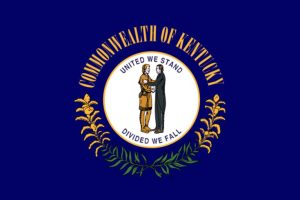
Since 1942, this phrase has been the official non-Latin state motto of Kentucky.[3] The U.S. state of Kentucky’s first governor, Isaac Shelby, was particularly fond of the stanza from “The Liberty Song”.
On the Missouri flag, the phrase is also written around the center circle.
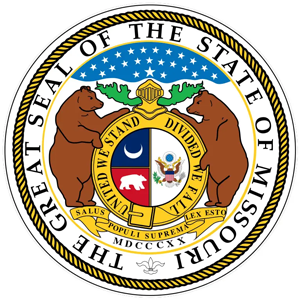
Patrick Henry
Patrick Henry used the phrase in his last public speech, given in March 1799, in which he denounced The Kentucky and Virginia Resolutions. Clasping his hands and swaying unsteadily, Henry declaimed, “Let us trust God, and our better judgment to set us right hereafter.
United we stand, divided we fall. Let us not split into factions which must destroy that union upon which our existence hangs.” At the end of his oration, Henry fell into the arms of bystanders and was carried, almost lifeless, into a nearby tavern. Two months afterward, he died.
During his unsuccessful campaign (technically speaking) against Stephen Douglas in 1858, Abraham Lincoln gave a speech centered on the House divided analogy to illustrate the need for a universal decision on slavery across all states.
Abraham Lincoln
During his unsuccessful campaign (technically speaking) against Stephen Douglas in 1858, Abraham Lincoln gave a speech centered on the House divided analogy to illustrate the need for a universal decision on slavery across all states.
United we stand, divided we fall. Let us not split into factions which must destroy that union upon which our existence hangs.” At the end of his oration, Henry fell into the arms of bystanders and was carried, almost lifeless, into a nearby tavern. Two months afterward, he died.
License Plates
United We Stand’ license plate designed by Troy Wingard for the South Carolina Department of Public Safety in 2002
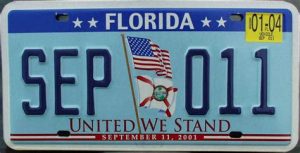
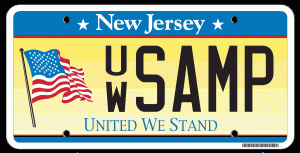
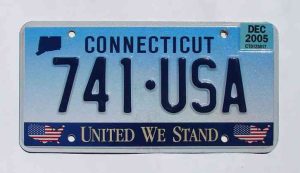
United We Stand Campaign since the American Revolution
The United We Stand campaign has been in popular use since the time of the American Revolution. It originated in the fourth verse of a 1768 patriotic ballad, The Liberty Song, by John Dickinson.
During the Civil War, the phrase became a rallying cry for the Union cause. By the early 20th century, labor unions had taken up the slogan as a call for solidarity in the struggle for better working conditions.
In World War II, United We Stand invoked not just American patriotism but unity among the Allied nations, as expressed by Queen Wilhelmina of the Netherlands in her address to the U.S. Congress on August 5, 1942: “United we stand, and united we will achieve victory.”
Most recently, in the aftermath of the terrorist attacks of September 11, 2001, the phrase United We Stand reemerged along with the flag as Americans confronted a new national crisis.
United We Stand Flag Cover Publishers Campaign – 1942
DURING JULY 1942, seven months after the United States entered World War II, magazines nationwide featured the American flag on their covers. Adopting the slogan United We Stand, some five hundred publications waved the stars and stripes to promote national unity, rally support for the war, and celebrate Independence Day.
FOR MAGAZINE PUBLISHERS, displaying the flag was a way to prove their loyalty and value to the war effort. For the U.S. government, the campaign was an opportunity to sell bonds and boost morale. The magazines brought home a message of patriotism and ideals worth fighting for.
THE NATIONAL MUSEUM OF AMERICAN HISTORY presents this exhibition to mark the sixtieth anniversary of the United We Stand campaign. We hope you enjoy touring the virtual exhibit, and we also invite you to visit the Museum, where nearly one hundred original flag covers will be on view from March 22 to October 27, 2002.
September 11, 2001
After September 11, 2001, the flag and the slogan United We Stand had a renewed meaning for many Americans. As the home of the Star-Spangled Banner, the National Museum of American History is a place to explore the history of our national symbol and the ideals for which it stands.
